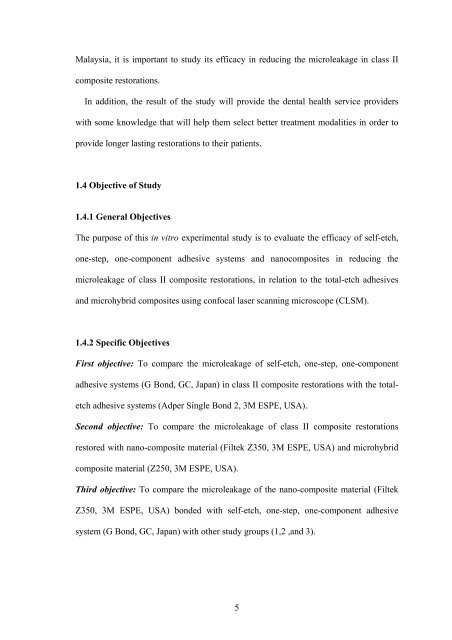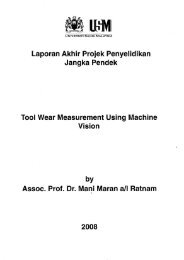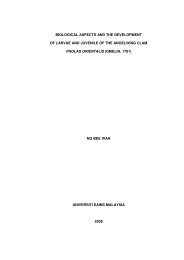microleakage in class ii composite restorations ... - ePrints@USM
microleakage in class ii composite restorations ... - ePrints@USM
microleakage in class ii composite restorations ... - ePrints@USM
You also want an ePaper? Increase the reach of your titles
YUMPU automatically turns print PDFs into web optimized ePapers that Google loves.
Malaysia, it is important to study its efficacy <strong>in</strong> reduc<strong>in</strong>g the <strong>microleakage</strong> <strong>in</strong> <strong>class</strong> II<strong>composite</strong> <strong>restorations</strong>.In addition, the result of the study will provide the dental health service providerswith some knowledge that will help them select better treatment modalities <strong>in</strong> order toprovide longer last<strong>in</strong>g <strong>restorations</strong> to their patients.1.4 Objective of Study1.4.1 General ObjectivesThe purpose of this <strong>in</strong> vitro experimental study is to evaluate the efficacy of self-etch,one-step, one-component adhesive systems and nano<strong>composite</strong>s <strong>in</strong> reduc<strong>in</strong>g the<strong>microleakage</strong> of <strong>class</strong> II <strong>composite</strong> <strong>restorations</strong>, <strong>in</strong> relation to the total-etch adhesivesand microhybrid <strong>composite</strong>s us<strong>in</strong>g confocal laser scann<strong>in</strong>g microscope (CLSM).1.4.2 Specific ObjectivesFirst objective: To compare the <strong>microleakage</strong> of self-etch, one-step, one-componentadhesive systems (G Bond, GC, Japan) <strong>in</strong> <strong>class</strong> II <strong>composite</strong> <strong>restorations</strong> with the totaletchadhesive systems (Adper S<strong>in</strong>gle Bond 2, 3M ESPE, USA).Second objective: To compare the <strong>microleakage</strong> of <strong>class</strong> II <strong>composite</strong> <strong>restorations</strong>restored with nano-<strong>composite</strong> material (Filtek Z350, 3M ESPE, USA) and microhybrid<strong>composite</strong> material (Z250, 3M ESPE, USA).Third objective: To compare the <strong>microleakage</strong> of the nano-<strong>composite</strong> material (FiltekZ350, 3M ESPE, USA) bonded with self-etch, one-step, one-component adhesivesystem (G Bond, GC, Japan) with other study groups (1,2 ,and 3).5
















